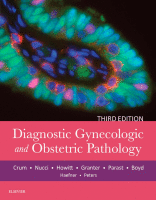Physical Address
304 North Cardinal St.
Dorchester Center, MA 02124

You’re Reading a Preview Become a Clinical Tree membership for Full access and enjoy Unlimited articles Become membership If you are a member. Log in here

Introduction The purpose of this chapter is to integrate the most common clinical scenarios faced in obstetric practice with pathologic examination of the placenta. Because much of the pathology has been covered descriptively in Chapter 31, Chapter 32 , the…

Introduction Placenta in Fetal Death General Historical/Clinical Background Examination of the placenta is a critical component in evaluating the etiology of intrauterine demise. This is particularly true as pregnancy progresses, because the cause of demise beyond the first trimester is…

General Principles Historical and Clinical Background A gross placental examination is important as a means of documenting structural abnormalities of the placenta and as a guide for tissue selection for histology. Many structural abnormalities were classified as significant placental disorders…

Introduction Gestational trophoblastic disease (GTD) is defined as a spectrum of abnormal gestations and neoplasms arising from villous or extravillous trophoblast that are associated with pregnancy. As discussed in this chapter, GTD may take several forms, each with its own…

Early Development Embryo The oocyte is usually fertilized near the distal end of the fallopian tube, at approximately day 15 of the menstrual cycle, or the day after ovulation. During the next week, as the zygote travels through the fallopian…

Introduction The distinction between primary and secondary tumors of the ovary is one of the more difficult morphologic dilemmas in gynecologic pathology, because there are similarities in both clinical and histologic features in many cases. The reported frequency of metastatic…

Introduction Histogenesis Stromal and sex cord–stromal tumors of the ovary constitute a diverse collection that is derived from the ovarian cortical stromal and hilar cells ( Fig. 27.1 ). These cells form during embryogenesis as condensations of subcoelomic mesenchyme, in…

Germ cell tumors of the ovary are presumed to derive from the pathogenic transformation of ovarian germ cells at different stages of development. The tumors that develop from these transformed germ cells are among the most unique in the human…

Epithelial Tumors Tumor Origin, Terminology, and Classification This chapter addresses pelvic epithelial malignancies that are commonly held synonymous with “ovarian cancer.” To maintain consistency, the term ovarian will be used as a generic term but this category encompasses tumors that…